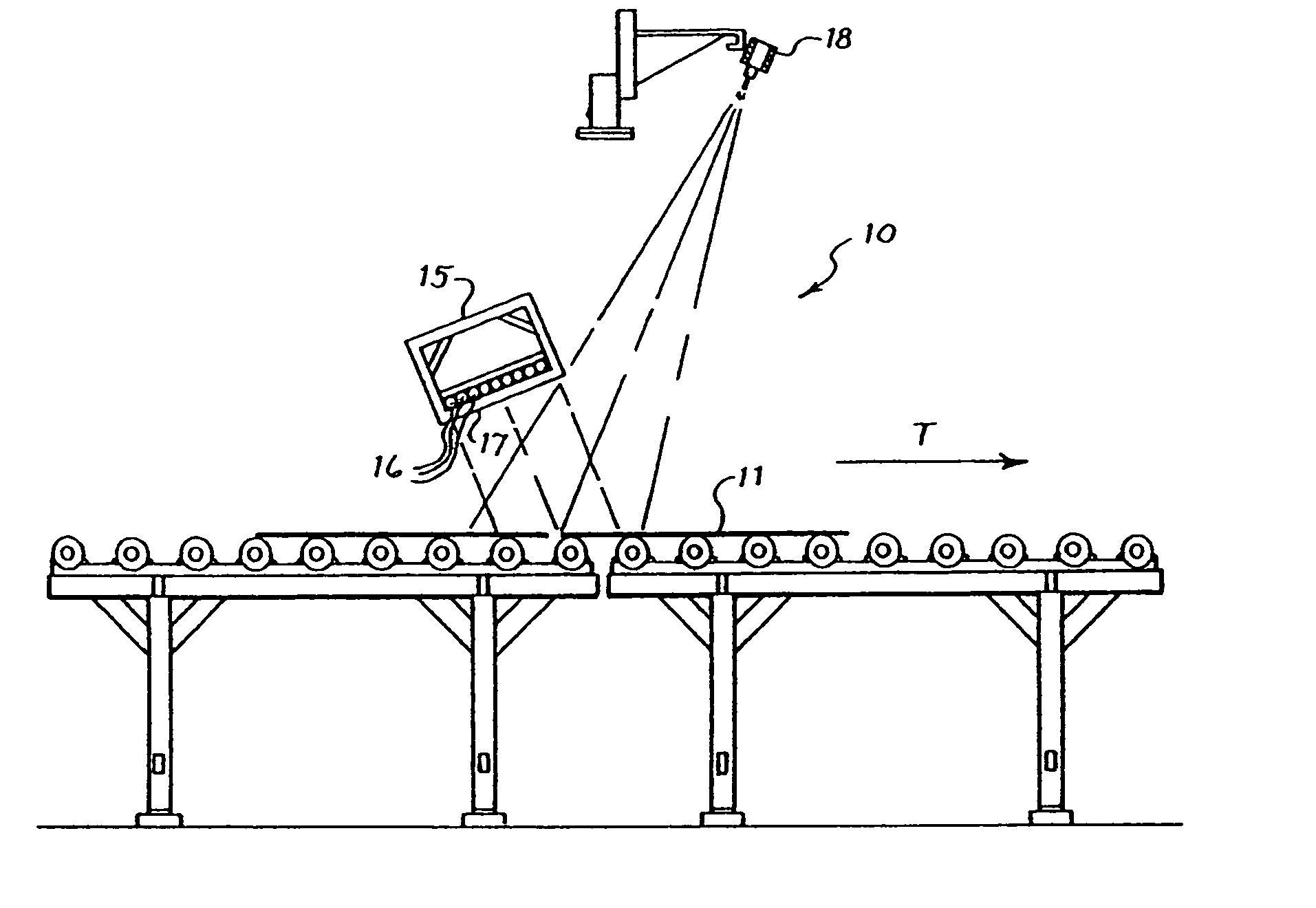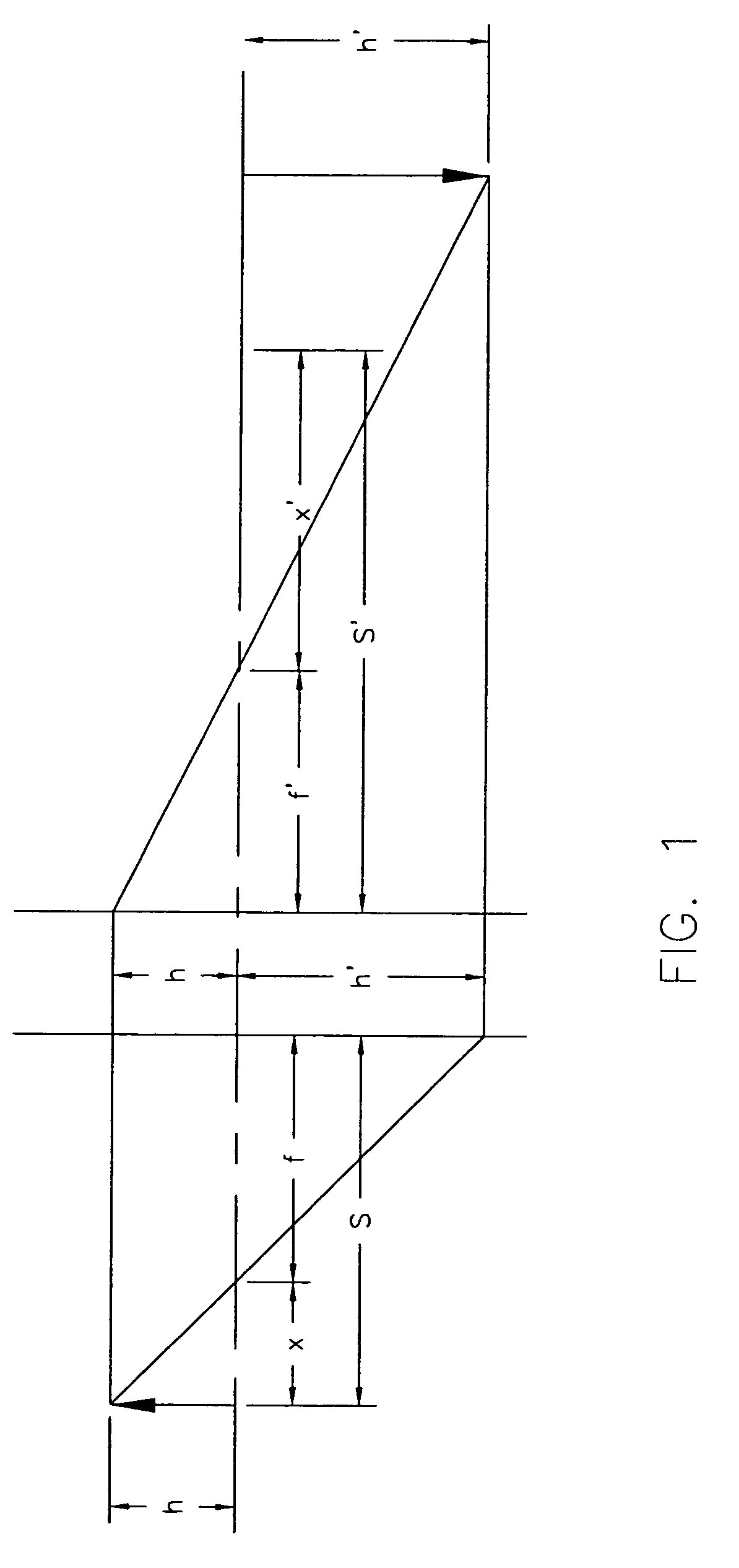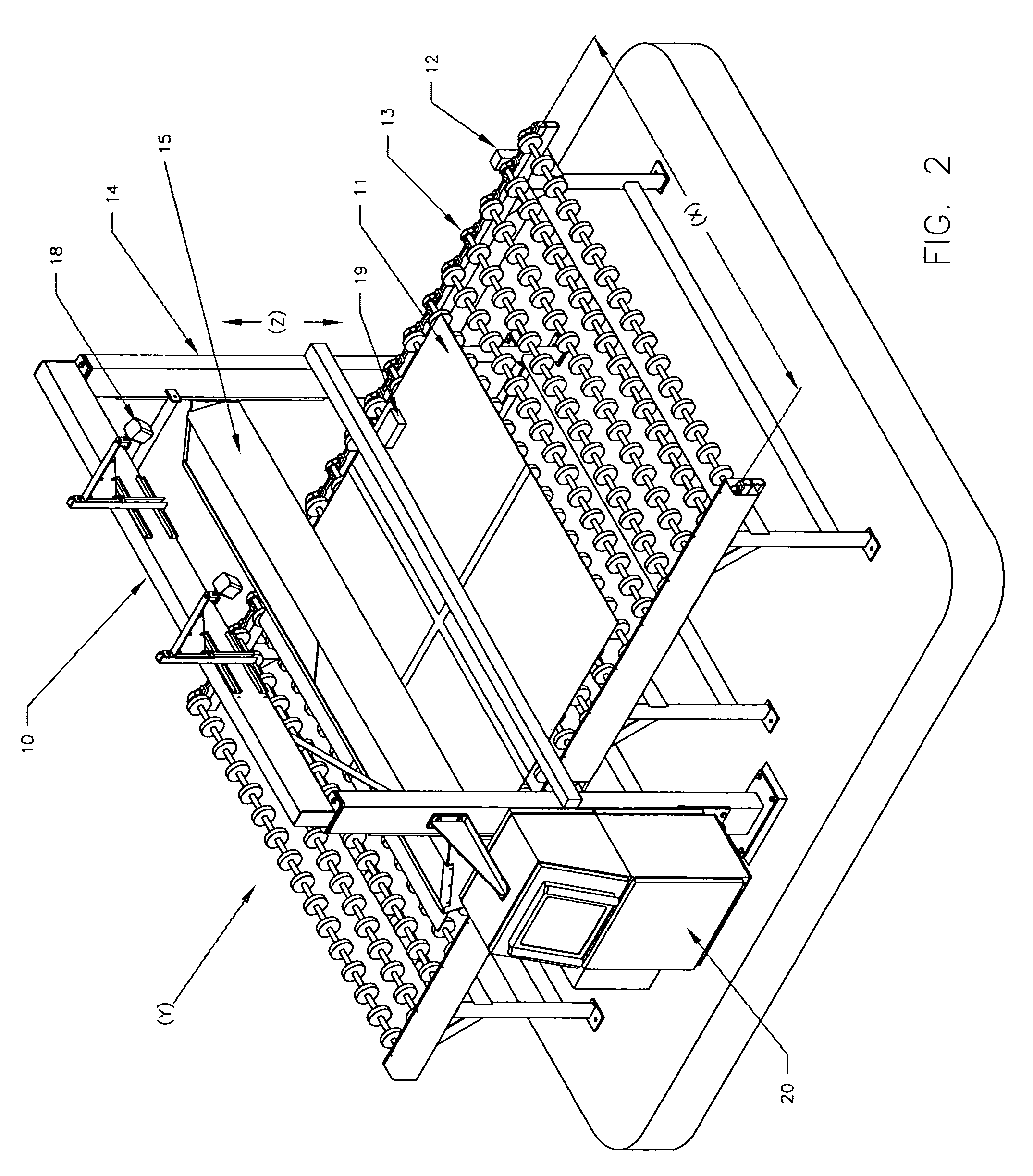Optical system for imaging distortions in moving reflective sheets
a reflective sheet and optical system technology, applied in the field of optical devices, can solve the problems of causing distortion, difficult to achieve critical temperature uniformity over many square meters, and affecting the effect of optical distortion
- Summary
- Abstract
- Description
- Claims
- Application Information
AI Technical Summary
Benefits of technology
Problems solved by technology
Method used
Image
Examples
specific example
[0047]Referring to FIG. 2, there is shown a perspective view of a roller wave measurement system 10 for use in inspecting individual glass sheets 11 which have been treated by a glass tempering system. In FIG. 2, the glass tempering system includes a conventional encoding device, 12 such as a rotary signal detector, detects the movement of the glass on the conveyor based upon the rotation of one of the rollers of a conveyor 13 having a plurality of rollers. The transport direction is indicated by the arrow T, and the conveyor width is indicated by the arrow W. As glass sheets 11 exit the tempering system, the apparatus 10 measures the roller wave distortion in the sheets 11. The apparatus includes a support frame 14 and a light box 15 having a set of light bulbs 16 and a patterned diffuser 17. The light bulbs 16 are high-intensity, high-frequency fluorescent tubular bulbs manufactured by Voltarc or similar, spanning the entire length of the light box 15. The light box 15 length exce...
PUM
 Login to View More
Login to View More Abstract
Description
Claims
Application Information
 Login to View More
Login to View More - R&D
- Intellectual Property
- Life Sciences
- Materials
- Tech Scout
- Unparalleled Data Quality
- Higher Quality Content
- 60% Fewer Hallucinations
Browse by: Latest US Patents, China's latest patents, Technical Efficacy Thesaurus, Application Domain, Technology Topic, Popular Technical Reports.
© 2025 PatSnap. All rights reserved.Legal|Privacy policy|Modern Slavery Act Transparency Statement|Sitemap|About US| Contact US: help@patsnap.com



